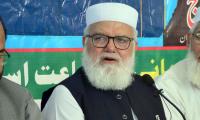Award winning Indian author Arundhati Roy writes in her article ‘The End of Imagination’, “My world has died. And I write to mourn its passing. India’s nuclear tests, the manner in which they were conducted, the euphoria with which they have been greeted (by us) is indefensible. To me, it signifies dreadful things. The end of imagination.”
On May 11, 1998 – 24 years after India conducted its first nuclear explosion in 1974 which widely came to be known as peaceful nuclear explosions (PNEs) – India once again shocked the international community by conducting three underground nuclear tests, followed by two more tests on May 13. With these tests, India emerged as the world’s sixth nuclear power and the first South Asian country to possess nuclear weapon capability. Every year, May 11 is celebrated as the National Technology Day in India, and this year the month marked two decades to the Pokhran-II test. What strikes the mind is why India shies away from celebrating the Pokhran-I test but loves to rejoice over the Pokhran-II test.
The only answer to this question is that the first nuclear test is a black spot on India’s nuclear proliferation record. The nuclear material (plutonium) for Pokhran-I was illicitly obtained from CIRUS (Canadian-Indian Research Utility Service) reactor, for which technical and financial assistance was provided by Canada, while the US had supplied the heavy water. As per the Indo-Canadian bilateral agreement, all of this assistance was supposed to be utilised for peaceful purposes and not weapon development. Consequently, in the aftermath of the nuclear test, Canada promptly cut off nuclear exports to India.
The news of India’s underground nuclear test equally shocked authorities in the US and other Western capitals. Government officials in New Delhi asserted that it was entirely a peaceful nuclear test. However, the US officials not only rejected the Indian assertion rather, then deputy secretary of state Kenneth Rush in a telegram to the US mission at the IAEA in Vienna stated that the US considers this “a contravention of the terms under which it [the nuclear material] was made available.”
The US’ position clearly indicated that it didn’t distinguish between explosions for peaceful and military purposes. India’s nuclear test also invited tough sanctions along with widespread condemnation from various other countries including Japan and Australia. The international community feared that illegal nuclear testing by India would destabilise the already troubled region and could lead to a nuclear arms race in the long run. This clearly shows that the so-called peaceful nuclear explosion earned India more humiliation than national prestige. India’s wrongful diversion of spent fuel to develop weapons not only generated immense hue and cry at globally, but also resulted in the creation of the Nuclear Suppliers Group (NSG).-A 48-nation nuclear technology cartel, the NSG aims to restrict export procedures for sensitive nuclear materials and technology to ensure they are not used for military purposes.
Today, as the dust of the PNE has settled, the US and its allies, which played an instrumental role in NSG’s creation, are hell-bent on letting India become a member of the elite club. Some past US administrations have already set a dangerous precedent by granting India-specific NSG waivers which enabled the latter to gain access to civilian nuclear technology and fuel from other countries. Pokhran-I helped India in pursuing the dangerous roadmap towards Pokhran-II, code named ‘Operation Shakti’. The second test was India’s full-fledged entry into the nuclear countries’ club by breaking an informal moratorium on nuclear testing. Under the Comprehensive Nuclear-Test-Ban Treaty (CTBT) a country is prohibited from conducting nuclear tests. India’s nuclear testing was the first major blow to the CTBT which was a highly regarded instrument to halt nuclear testing.
This event literally marked the beginning of the nuclear era in South Asia. India’s then prime minister I K Gujral stated: “It was always known that India had the capability to do this. The tests only confirm what was always known.” With these tests, the much touted Gandhian pacifism as the core element of India’s foreign policy outlook was completely wiped out.
Factually, India demonstrated nuclear capability more than four decades ago, but the nuclear proliferation label attached with the PNE has made India feel uncomfortable when the roots of the nuclear weapons programme is traced back to Pokhran-I. The bitter truth is that the prestige-driven Indian pursuit of nuclear capability, coupled with regional hegemonic aspirations, has furthered South Asia’s volatile security environment.
India may turn a blind eye to the so-called peaceful nuclear explosion but it is that single event that has led South Asia towards a costly nuclear arms race. The nuclear trajectory that India has pursued is not only dangerous for regional security but the global aspiration it has attached to the nuclear programme also pose serious security challenges to the West.
The writer is a visiting fellow of the South Asia Program at the Stimson Center.
Email: yhussain@stimson.org
For its part, Pakistan must avoid projecting urgency in resolving these tensions
We will remember Saeeda Gazdar as a potent voice of courage and bravery
Economic nationalism remains potent political narrative, influencing both Republican and Democratic platforms
Yes, blockchain, decentralised and distributed ledger technology, is foundational backbone of cryptocurrencies
Blue carbon covers merely 2% of ocean surface but absorbs 50% of carbon dioxide
During WWII, Japan’s economy and national morale were plummeted by its doomed alliance with Germany







